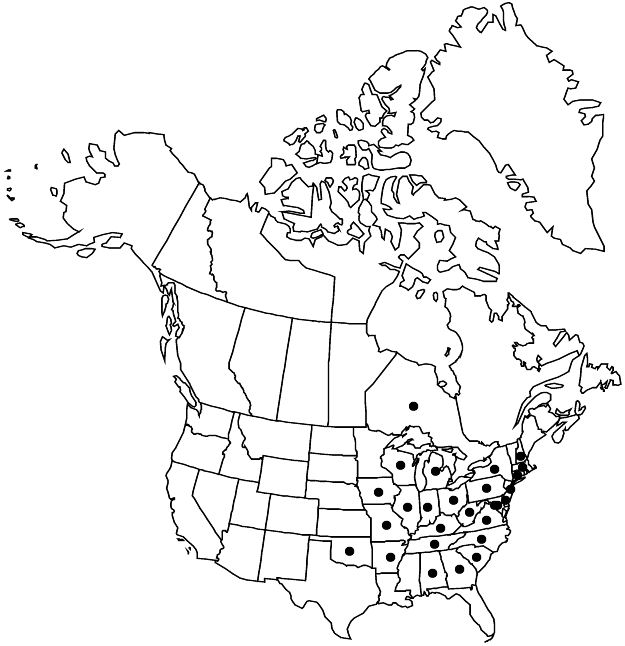Viola striata
Hort. Kew. 3: 290. 1789.
Plants perennial, caulescent, not stoloniferous, 10–60 cm. Stems 1–4, ascending to erect (often declining during anthesis), glabrous or pubescent, on caudex from fleshy rhizome. Leaves basal and cauline; basal: 2–6; stipules lanceolate to narrowly deltate, margins laciniate, apex acute; petiole 3–6 cm, glabrous or puberulent; blade ovate to reniform, 2–7 × 1–2.5 cm, base cordate, margins crenate to serrate, ciliate or eciliate, apex obtuse to acute, surfaces glabrous or pubescent; cauline similar to basal except: stipules lanceolate, margins laciniate; petiole 3–7 cm; distal blades ovate to deltate, 1–6 × 1–4 cm, base cordate, apex acuminate to acute. Peduncles 5–12 cm, glabrous or pubescent. Flowers: sepals lanceolate, margins ciliate or eciliate, auricles 2–3 mm; petals white or cream on both surfaces, without yellow patch basally, lowest and usually lateral 2 purple-veined, lateral 2 and sometimes all densely bearded, lowest 10–18 mm, spur white, gibbous to elongated, 3–6 mm; style head bearded; cleistogamous flowers axillary. Capsules ellipsoid, 6–7 mm, glabrous. Seeds beige to bronze, 1.5–3 mm. 2n = 20.
Phenology: Flowering Mar–Jun.
Habitat: Riparian or alluvial woods, floodplains in silty loam, meadows
Elevation: 40–1000 m
Distribution

Ont., Ala., Ark., Conn., Del., D.C., Ga., Ill., Ind., Iowa, Ky., Md., Mass., Mich., Mo., N.H., N.J., N.Y., N.C., Ohio, Okla., Pa., S.C., Tenn., Va., W.Va., Wis.
Discussion
Dead, long-persistent stems of Viola striata are often present the following season. In flower, the plants are often mistaken for V. canadensis because the petals are whitish (H. E. Ballard 1992).
Viola striata reportedly hybridizes with V. labradorica (= V. ×eclipes H. E. Ballard), V. rostrata (= V. ×brauniae Grover ex Cooperrider), V. walteri var. appalachiensis (= V. ×wujekii H. E. Ballard), and V. walteri var. walteri (= V. ×cooperrideri H. E. Ballard).
Selected References
None.